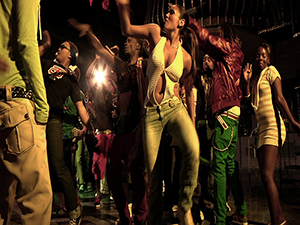 “Dancehall” intended as an actual “dance” is nowadays evolving in different ways. Being influenced not only from Europe but now from all the rest of the world, Jamaica, churns out dozens of new crew with the most talented young dancers and hundreds of new steps. Compared to the past, there are many more dancers in Jamaica because they have finally found a motivation: the opportunity to work with their culture, their knowledge and their skills, also they have as samples so many other dancers that have been able to travel all around the world teaching or performing what they have learned or invented during parties and street local events in Jamaica. It could happen that some of the moves are similar to each other, and usually, this is the reason why dancers start arguing. Like, for example, this happened for “Shelly Bounce” (created by Shelly Xpressionz) and “Bruk Back” (created by the Outshine Girls), or “My Space” (by John Bling) and “Twist Yuh Foot Dem” (included in Ravers Clavers’ “Wul Up”).
“Dancehall” intended as an actual “dance” is nowadays evolving in different ways. Being influenced not only from Europe but now from all the rest of the world, Jamaica, churns out dozens of new crew with the most talented young dancers and hundreds of new steps. Compared to the past, there are many more dancers in Jamaica because they have finally found a motivation: the opportunity to work with their culture, their knowledge and their skills, also they have as samples so many other dancers that have been able to travel all around the world teaching or performing what they have learned or invented during parties and street local events in Jamaica. It could happen that some of the moves are similar to each other, and usually, this is the reason why dancers start arguing. Like, for example, this happened for “Shelly Bounce” (created by Shelly Xpressionz) and “Bruk Back” (created by the Outshine Girls), or “My Space” (by John Bling) and “Twist Yuh Foot Dem” (included in Ravers Clavers’ “Wul Up”).
What are we, European people, supposed to think, which side should we go and follow?
Let's see what some of the most representative dancers from Jamaican and European scene think about it.
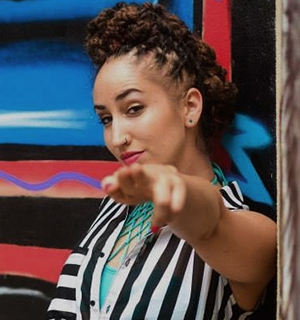 SWAGGI MAGGI (Germany)
SWAGGI MAGGI (Germany)
First of all I think that, even in the “old school” dancehall-era there were some similar steps but in general there were less steps than today. So it was easier to differentiate them. Most of the time if you know the creator of the certain step you will know the specific attitude and body language of the step, which is always closely linked to the creator.
Now, every single dancer will always be inspired, even if unconsciously, by its ancestors and so are Jamaican dancers. I think though, that you can execute a move with a different attitude, energy and idea behind it even if you are using a similar movement pattern of another step. That is why for me it’s always important to know the creator of a step and possibly learn the step from that person or crew.
It is true that right now there are many young dancers in Jamaica who are probably not grown enough in their dance and body language to create innovative steps with their own energy and ideas behind them but they take parts of other moves they see around them and put them together in a “new” step. For myself, if I see a step like this, I just don’t bother learn it because I don’t feel it is something new and interesting. You just have to decide for yourself which step you want to learn and which one not.
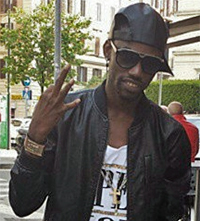 DANSA BLING (Jamaica)
DANSA BLING (Jamaica)
A lot of steps are similar, same move but with a different groove. Sometimes it is just a muscle memory, if you go to a party and watch a dancers dancing, his flow gets directily into your mind, with his steps as well. Then when you go back home, you start listening music and you think you are creating something new, when basically it is just something you are remembering and pops to your mind. But it also happens that people literally “steal” your steps, they just see them and take them, but we personally don’t do that, we like create brand new steps or inspiring by steps that already exist.
In my opinion, when European people catch the similarity between two steps, they should just learn them from the dancers who invented them, so they can also catch the different flow and learn the difference. Let’s say that I teach you “grooving”, you should be able to catch the difference if somebody else teaches you something similar by the flow, that is definitely different.
 ALEVANILLE (Italy)
ALEVANILLE (Italy)
Being in Europe, I can say we are a sort of a “filter” of this culture and and dance as well, so we should report the most accurate version of Jamaican dance scene and explain how it is lived over there between the dancers.
In case we find similar steps we should focus and catch the small differences given by the dancers to the step flow, trying to make them one different from another.
It is also true that some of the young dancers have any knowledge about what has been already created in the past and there are some others that just try to inspire to something already existing; well, in this case, I believe it is better clarify it giving credits to dancers who has done that before you did.
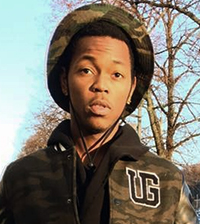 DAMION, BG DANCERS (Jamaica)
DAMION, BG DANCERS (Jamaica)
My answer is that I don't have problems with any of the dancehall crews in the world because it is a sign to show that dancehall is growing and people are getting interested in what we Jamaican do, but the problem for me is when people don't even try to learn the culture to know where everything is coming from, without giving any credit to Jamaicans.
Otherwise I respect the crews that respect Jamaicans and always try to learn more and more and don't go for the hype and the money and take time out sometimes to work towards knowing what is dancehall because some people only thinks dancehall is just a dance and there is so much more behind that.
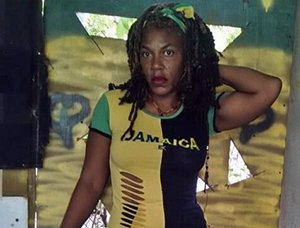 STACIA FYA (Jamaica)
STACIA FYA (Jamaica)
I know that sometimes some of the steps look similar between them because they are inspired from other dancers, but I also know that some of them are just copies because they don’t make researches and don’t get informed.
At the same time I think that if Europeans are able to follow all of them why they shouldn’t do that? I mean, being versatile is very important, it is a way to bring dancehall to an higher level.
Dancehall is a continuous evolution, why we shouldn’t follow it? Just remember to focus on what all of this comes from, studying it like a vocabulary which we should always keep in our mind.